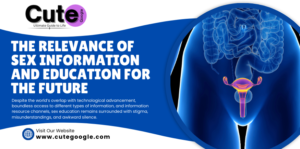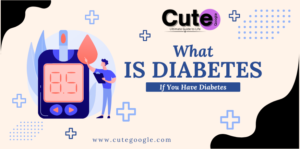Perceiving Autism and Autism Spectrum Disorder Through Different Ages, From Childhood To Adulthood
A lot of people have heard the term autism, but it still tends to baffle individuals. Whether you’re a parent, a teacher, a healthcare worker, or even someone trying to self-reflect, it’s essential to grasp what autism and autism spectrum disorder truly are.
In this article, we will embody the primary essentials, like what autism is, what signs to check for at any age, and how to support individuals with an autism diagnosis. We’ll also cover types of autism disorders and showcase how every person on the spectrum can greatly differ in their strengths as well as challenges.
Making it simplistic and human is our goal.
What Is Autism and Autism Spectrum Disorder? Literally, what is it?
Formally termed Autism Spectrum Disorder, autism is an ongoing condition that varies in severity and affects how a person can communicate, social interactions, and learning adequacy. The key word here is spectrum. That means autism shows up in many different ways, with varying levels of ability and support needs.
Individuals on the spectrum may be challenged by the following:
• Social relationships
• Communication, either verbal or nonverbal
• Repetitive behaviors
• Sound, light, or other sensory overloads
However, they may also excel with:
• Memory recall
• Attention to details
• Specific subject interests
• Direct speech
ASD is not classified as a disorder; hence, it does not need treatment. It defines an individual’s way of experiencing reality. With proper understanding and support, people with autism can prosper.
Asperger’s Autism Spectrum: Why Did the Term “Asperger’s” Get Discontinued?
Perhaps you have come across the term Asperger’s autism spectrum quite frequently in the past. It used to be seen as a standalone diagnosis describing people with mild symptoms of autism, especially those who were not speech delayed but were socially withdrawn.
Nowadays the term more commonly used is Autism Spectrum Disorder, Asperger’s. This is because medical practitioners have included Asperger’s within the broader ASD category. So, a person might still prefer to use the term Asperger’s, but in essence they will have the official diagnosis of autism spectrum disorder, the current best term used.
Asperger’s Syndrome was previously diagnosed with:
• Reasonably strong or strong intelligence. This means average or higher IQ.
• Robust vocabulary yet struggles with social interaction.
• Specific yet profound interests, including everything about trains or space or history.
A respectful approach towards personal choices must be upheld—some choose to identify as having Asperger’s, whereas others prefer ASD.
Types of Autism Disorders: Are There Different Kinds?
Yes, and no.
The medical business now prefers to diagnose people using the term ‘spectrum of autism’ instead of classifying it into different types, which is still popularly used in conversations to explain the different presentations of the disorder.
These types are often mentioned in conversations, but most are outdated:
1. Classic Autism (Kanner’s Syndrome)
Often includes delays in speech, intense social issues, and repetitive movements.
2. Asperger’s Syndrome
High-functioning autism. Great command over language, harder with social situations.
3. Pervasive Developmental Disorder—Not Otherwise Specified (PDD-NOS)
A child is diagnosed when he shows explicit signs of autism but does not fit into the other categories.
4. Childhood Disintegrative Disorder
The child seems utterly normal for years, only to lose the ability to communicate, socialize and their social skills completely.
5. Rett Syndrome
Rett syndrome is now considered distinct from ASD. It mostly impacts girls and involves the loss of motor abilities and hand skills.
These subtypes can be more insightful when determining the differences among individual cases of autism spectrum disorder, as there is considerable variety in circumstances.
Childhood Autism Symptoms: What to Look For Early
Identifying childhood autism symptoms can greatly assist children in receiving the necessary support at a very young age and in a timely manner. Signs typically develop before 3 years, but sometimes only get noticed when kids reach school going age.
Here are a few examples of such signs:
• Failing to make eye contact or smile in social settings
• Speech delay or lack of sound altogether
• Borderline pathological repetition of words (echolalia)
• Not being responsive to one’s name
• Preference to play alone
• Hand flapping, rocking, or other repetitive movements
• Focusing intently on certain objects or topics
• Being overly sensitive to sound, light or touch
Each of these signs may not be observable in all children, and many signs may not even mean autism, so caution is certainly advisable. But if there are multiple features that are seen together most of the time, engaging a pediatrician or developmental specialist will be helpful.
Children can be taught and can benefit greatly in acquiring essential skills and self-assurance through early intervention by speech therapy, occupational therapy, and support based on behavior.
Adults Autism Signs Symptoms: When Diagnosis Comes Later
Autism persists into adulthood, but it evolves. In Canada, for instance, individuals are considered adults at 18. Autism is usually diagnosed in childhood, although many reach adulthood without a formal diagnosis. You may have heard them labeled as “quirky,” “shy,” or even “difficult.”
Look out for these common adult autism signs and symptoms:
• Struggling in everyday social interactions (small talk, group settings)
• Taking idioms literally (literalness)
• Going through life only in routines, and finding it hard to modify those routines
• Having intensely deep, passionate interests that others may find overwhelming
• Having alarming and intense issues with some of the senses (e.g., loud environments)
• Not being able to understand body language or facial expressions
• A feeling of ‘never fitting in,’ but unsure why
For many, getting an autism diagnosis as an adult can be life-altering. There’s a surge of processes accessing and funding services that can improve one’s quality of life. There is a great value in therapy and sometimes workplace accommodations, alongside peer support groups.
Autism Spectrum Syndrome: A Term That Causes Confusion
At times, you may encounter the term autism spectrum syndrome, but this is not a formal diagnosis. People may commonly refer to it as such, but the correct clinical term is Autism Spectrum Disorder (ASD).
Autism is frequently linked with other co-occurring conditions (syndromes or disorders) like
• ADHD
• Anxiety
• Depression
• Sensory Processing Disorder
• Epilepsy
• Gastrointestinal issues
• Sleep Disturbances
It’s important to note that every individual is unique, so their experience of autism will be different. These overlapping conditions can make managing daily life more difficult, but they can also be addressed and managed individually.
Everywhere Is Possible
Failing to properly diagnose autism in childhood doesn’t interfere with the likelihood of succeeding later in life. Regardless of when one chooses to attend to these challenges, autism is a lifelong endeavor that requires learning. Seeking assistance may be necessary to some degree throughout life, but many others are able to live autonomously, pursue careers, and even raise families.
Aside from self-defined goals, support can also take many different forms, including
• Being taught communication may take time to develop and will take many different forms.
• Applying sensible boundaries prevents forced hugs, loud spaces, or eye gaze contact for those who experience hypo- or hypersensitivity.
• Encouragement in areas of aptitude where focus can be achieved, like music, math or art.
• Freaking out about the phrase “you don’t look autistic” being overused. There’s no single way autism presents itself.
• Support diverse and inclusive school, community and workplace policies.
The Importance of Raising Awareness for Autism
Awareness of autism and autism spectrum disorder is more than just an awareness about diagnosis. It’s about the need to create a culture where people are accepted for who they really are, where children with autism do not have to hide themselves behind a mask, and where adults do not have to spend years feeling like they are the odd ones out.
It is about acknowledging the humanity of a person with autism as a whole without reducing them to a list of check marks.
The Main Points You Need to Understand:
• Everyone on the spectrum of autism differs in a unique way, making it a spectrum by nature.
• Asperger’s autism spectrum is part of the broader ASD diagnosis umbrella.
• There are many different categories of autism disorders, each having its own difficulties and advantages.
• Signs of autism Reflection in childhood tends to come at an early age, especially with the right support.
• A lot of adults unknowingly have the indicative symptoms of autism until much later in life.
• Although descriptive, the term autism spectrum syndrome is a blanket statement, and many other intersecting conditions do exist.
• People living with autism face a lot of difficulties, but with care, acceptance, and patience, they are able to live full and meaningful lives.
So let’s make sure we are exposed to and understand the fact that hundreds of thousands of people around the world are diagnosed and on the autism spectrum and keep encouraging every one of them to step through the doors of opportunity that enable them to unleash the potential they possess.





